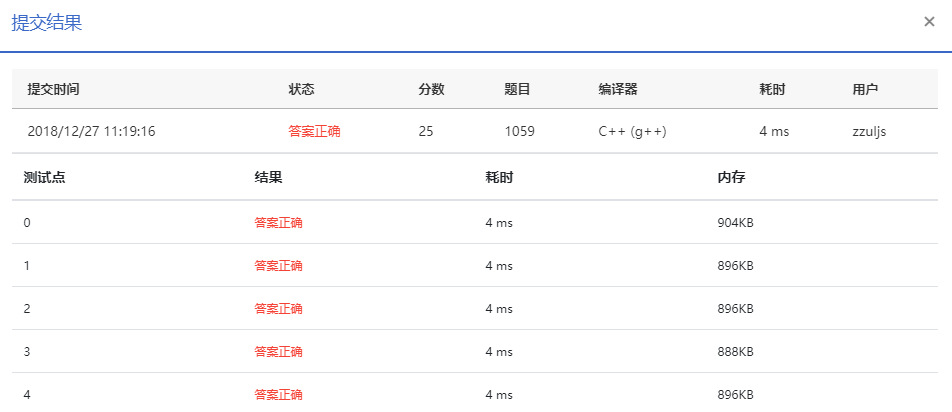1059 Prime Factors (25 分)厄拉多塞素數篩選法
題目
Given any positive integer N, you are supposed to find all of its prime factors, and write them in the format .
Input Specification:
Each input file contains one test case which gives a positive integer N in the range of long int.
Output Specification:
Factor
in the format
, where
are prime factors of
in increasing order, and the exponent
is the number of —— hence when there is only one is 1 and must NOT be printed out.
Sample Input:
97532468
Sample Output:
97532468=2^211171011291
解題思路
題目大意: 給定一個正整數N,找到它所有的質因子,並寫成如下格式:
解題思路: 這道題的主要難點在找質因子上,如果用窮舉法暴力遍歷的方式去一個一個找質因子,會用到兩層迴圈,時間複雜度在
,那樣至少有兩個點會執行超時。
這裡介紹一個更高效的找質因子的方法——厄拉多塞素數篩選法 (詳情參考連結),該方法能把N以內的質因子的篩選,時間複雜度降到
。
在選出所有的質因子之後就可以統計其計算係數了,可以用map直接進行統計。
注意一個邊界點,當N自己是一個質數的時候,直接輸出自己。更特別的,當N為1時,直接輸出“1=1”。
/*
** @Brief:No.1059 of PAT advanced level.
** @Author:Jason.Lee
** @Date:2018-12-25
** @Solution: https://blog.csdn.net/CV_Jason/article/details/85282890
*/
#include<iostream>
#include<vector>
#include<map>
#define MAX 100000
using namespace std;
vector<bool> isPrime(MAX);
vector<int> prime;
int N;
void allPrime(){
fill(isPrime.begin(),isPrime.end(),1);
for(int i=2;i*i<MAX;i++){
for(int j=i*i;j<MAX;j+=i){
isPrime[j] = 0;
}
}
for(int i=2;i<MAX;i++){
if(isPrime[i]){
prime.push_back(i);
}
}
}
int main(){
while(cin>>N){
allPrime();
map<int,int> factor;
if(N==1){
cout<<"1=1"<<endl;
return 0;
}
int temp = N;
while(N>1){
for(auto elem:prime){
while(N%elem==0){
factor[elem]++;
N/=elem;
}
}
if(N == temp){
cout<<N<<"="<<N<<endl;
return 0;
}
}
auto it = factor.begin();
cout<<temp<<"="<<it->first;
if(it->second>1)
cout<<"^"<<it->second;
for(++it;it!=factor.end();it++){
cout<<"*"<<it->first;
if(it->second>1)
cout<<"^"<<it->second;
}
cout<<endl;
}
return 0;
}

總結
如果知道厄拉多塞篩選法,這道題很快就能做出來了,如果不知道,這道題近乎無解,看來有時候出了程式設計功底之外,一定的數學常識也是必備的。其實有時候覺得程式設計到底就是數學……
